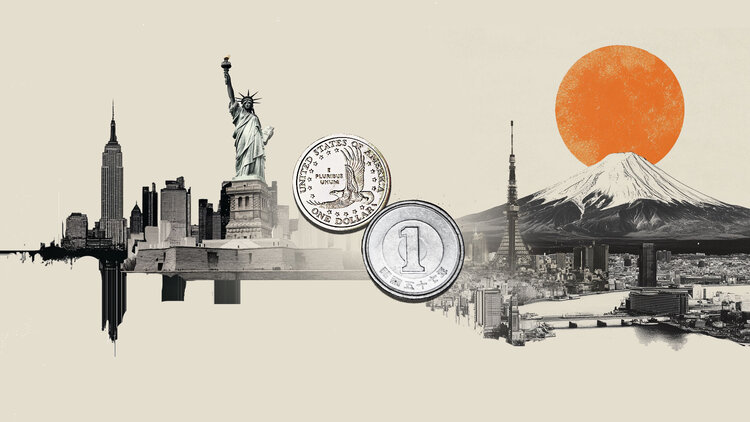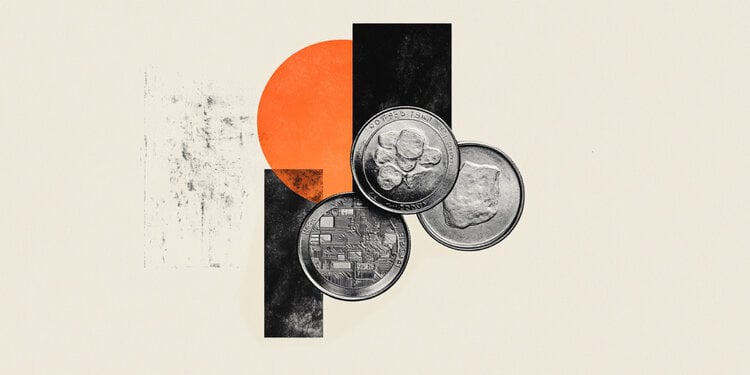- The Canadian Dollar sees mixed results, but falls against the US Dollar on Wednesday.
- Canada’s current account records a smaller rebound than expected.
- US GDP beats expectations, weighing on Fed pivot expectations on Tuesday.
He Canadian dollar (CAD) posted mixed results against the other major currencies on Wednesday and fell against the US dollar (USD). The Canadian dollar fell three tenths against the US dollar.
Canada’s trade balance rebounded in the third quarter, but still fell short of expectations, as the Canadian current account recorded a decline of C$3.22 billion. The second quarter figure was revised downward to $7.32 billion.
Daily Market Summary: Canadian Dollar Declines Against Greenback as Markets Twist
- The Canadian current account was expected to post a gain of CAD 1 billion, but was reduced by another $3.22 billion on Wednesday.
- The previous figure was also revised downwards from $6.63 billion, exacerbating the CAD trade imbalance.
- US Gross Domestic Product (GDP) growth beat the market by recording an acceleration of 5.2% in the third quarter, exceeding the 5.0% forecast and the 4.9% growth of the second quarter.
- US Personal Consumption Expenditure (PCE) prices for the third quarter missed expectations, and the mixed data results are clouding the Dollar’s outlook.
- PCE prices fell to 2.8%, markets expected a second quarter result of 2.9%.
- The Fed returns to the fray on Wednesday, after Tuesday’s comments sparked widespread bidding in the markets.
- The President of the Federal Reserve Bank (Fed) of Richmond spoke in the US market session in a noticeably more hawkish tone than Fed Governor Christopher Wallace on Tuesday.
- Chairman Barkin is skeptical that 2% inflation can be reached from now on without additional tightening, or at least maintaining the Fed’s “higher for longer” stance.
Current rate of the Canadian dollar
Below is the percentage change of the Canadian Dollar (CAD) against the currencies listed today. The Canadian dollar was the weakest currency against the Swiss franc.
| USD | EUR | GBP | CAD | AUD | JPY | NZD | CHF | |
| USD | 0.37% | 0.30% | 0.34% | 0.76% | 0.20% | 0.09% | -0.18% | |
| EUR | -0.36% | -0.05% | -0.03% | 0.37% | -0.17% | -0.29% | -0.55% | |
| GBP | -0.31% | 0.05% | 0.04% | 0.44% | -0.12% | -0.25% | -0.48% | |
| CAD | -0.33% | 0.04% | -0.03% | 0.44% | -0.14% | -0.24% | -0.53% | |
| AUD | -0.76% | -0.38% | -0.44% | -0.43% | -0.55% | -0.65% | -0.92% | |
| JPY | -0.20% | 0.18% | 0.11% | 0.14% | 0.58% | -0.09% | -0.37% | |
| NZD | -0.06% | 0.27% | 0.22% | 0.25% | 0.68% | 0.11% | -0.27% | |
| CHF | 0.17% | 0.54% | 0.48% | 0.51% | 0.94% | 0.37% | 0.28% |
The map shows the percentage changes of the major currencies against each other. The base currency is chosen in the left column, while the quote currency is chosen in the top row. For example, if you choose the euro in the left column and scroll down the horizontal line to the Japanese yen, the percentage change in the box will represent EUR (base)/JPY (quote).
Frequently Asked Questions about the Canadian Dollar
What factors determine the price of the Canadian dollar?
The key factors that determine the price of the Canadian dollar (CAD) are the level of interest rates set by the Bank of Canada (BoC), the price of oil, Canada’s main export product, the health of its economy, inflation and the trade balance, which is the difference between the value of Canadian exports and its imports. Other factors are market confidence, that is, whether investors bet on riskier assets (risk-on) or look for safe assets (risk-off), with the risk-on being positive for the CAD. As its largest trading partner, the health of the US economy is also a key factor influencing the Canadian dollar.
How do Bank of Canada decisions affect the Canadian dollar?
The Bank of Canada (BoC) exerts significant influence over the Canadian Dollar by setting the level of interest rates that banks can lend to each other. This influences the level of interest rates for everyone. The BoC’s main objective is to keep inflation between 1% and 3% by adjusting interest rates up or down. Relatively high interest rates are usually positive for the CAD. The Bank of Canada can also use quantitative easing and tightening to influence credit conditions, with the former being negative for the CAD and the latter being positive for the CAD.
How does the price of oil affect the Canadian dollar?
The price of oil is a key factor influencing the value of the Canadian Dollar. Oil is Canada’s largest export, so the price of oil tends to have an immediate impact on the value of the CAD. Generally, if the price of oil rises, the CAD also rises, as aggregate demand for the currency increases. The opposite occurs if the price of oil falls. Higher oil prices also tend to lead to a higher probability of a positive trade balance, which also supports the CAD.
How does inflation data influence the value of the Canadian Dollar?
Although inflation has traditionally always been considered a negative factor for a currency, as it reduces the value of money, the opposite has actually happened in modern times, with the relaxation of cross-border capital controls. Higher inflation often leads central banks to raise interest rates, attracting more capital inflows from global investors looking for a lucrative place to store their money. This increases the demand for the local currency, which in the case of Canada is the Canadian Dollar.
How does economic data influence the value of the Canadian dollar?
The published macroeconomic data measures the health of the economy and may have an impact on the Canadian dollar. Indicators such as GDP, manufacturing and services PMIs, employment and consumer confidence surveys can influence the direction of the CAD. A strong economy is good for the Canadian dollar. Not only does it attract more foreign investment, but it may encourage the Bank of Canada to raise interest rates, resulting in a stronger currency. However, if economic data is weak, the CAD is likely to fall.
Source: Fx Street
I am Joshua Winder, a senior-level journalist and editor at World Stock Market. I specialize in covering news related to the stock market and economic trends. With more than 8 years of experience in this field, I have become an expert in financial reporting.







